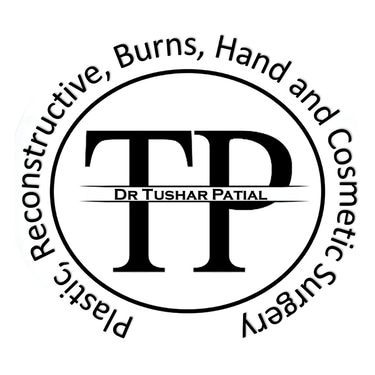Burns
All about Burns
Tushar Patial
2/11/20252 min read


First Aid for Burns: Your Step-by-Step Guide to Effective Care
Burns are among the most common household injuries, yet many people aren’t sure how to respond when they occur. Whether it’s a minor scald from boiling water or a more serious injury, knowing how to administer proper first aid can minimize pain, prevent complications, and even save a life. In this guide, we’ll walk you through the essential steps to care for burns effectively.
Understanding Burn Degrees
Burns are categorized by severity:
First-Degree Burns: Affect the top layer of skin (e.g., mild sunburns). Symptoms include redness and mild pain.
Second-Degree Burns: Damage deeper layers, causing blisters, swelling, and intense pain.
Third-Degree Burns: The most severe, destroying all skin layers. The area may appear charred, white, or waxy. These require immediate emergency care.
Immediate Steps for Burn First Aid
Stop the Burning Process
Thermal Burns: Move away from the heat source.
Chemical Burns: Rinse the skin with cool water for 15–20 minutes to remove residual chemicals.
Electrical Burns: Ensure the power source is off before touching the victim.
Cool the Burn
Hold the burned area under cool (not icy) running water for 10–15 minutes. Avoid ice, which can worsen tissue damage.
For larger burns, use a clean, wet cloth to gently cool the skin.
Remove Constrictive Items
Carefully take off jewelry, belts, or tight clothing near the burn before swelling begins.
Protect the Burn
Cover loosely with a non-stick sterile gauze or cling film. Avoid cotton wool or fluffy materials that may stick.
Do not pop blisters—they protect against infection.
Manage Pain
Over-the-counter pain relievers like ibuprofen (Brufen) or paracetamol (Dolo) can help.
What NOT to Do
Don’t apply butter, oil, toothpaste, or home remedies—these trap heat and increase infection risk.
Avoid adhesive bandages directly on the burn.
Never peel away stuck clothing; cut around it instead.
When to Seek Medical Help
Seek emergency care if the burn:
Is third-degree or covers a large area (e.g., larger than your palm).
Affects the face, hands, feet, or genitals.
Results from chemicals, electricity, or explosions.
Shows signs of infection (pus, redness spreading, fever).
Aftercare Tips
Keep the burn clean: Gently wash with mild soap and water daily.
Apply ointment: Use antibiotic creams or aloe vera (for minor burns).
Monitor healing: Watch for prolonged redness, swelling, or odor.
Preventing Burns
Kitchen safety: Turn pot handles inward and use oven mitts.
Check water temperature before bathing.
Install smoke detectors and keep fire extinguishers handy.
Use sunscreen to avoid sunburns.
Final Thoughts
Quick, calm action is key when treating burns. While minor burns often heal at home, never hesitate to seek professional help for severe injuries. Share this guide to empower others—it could make all the difference in an emergency!
Stay safe, stay prepared!
Disclaimer: This post is for informational purposes only. Always consult a healthcare professional for serious injuries.
Let this guide be your go-to resource for burn care. By staying informed, you’re already one step closer to protecting yourself and your loved ones. 💙🔥
